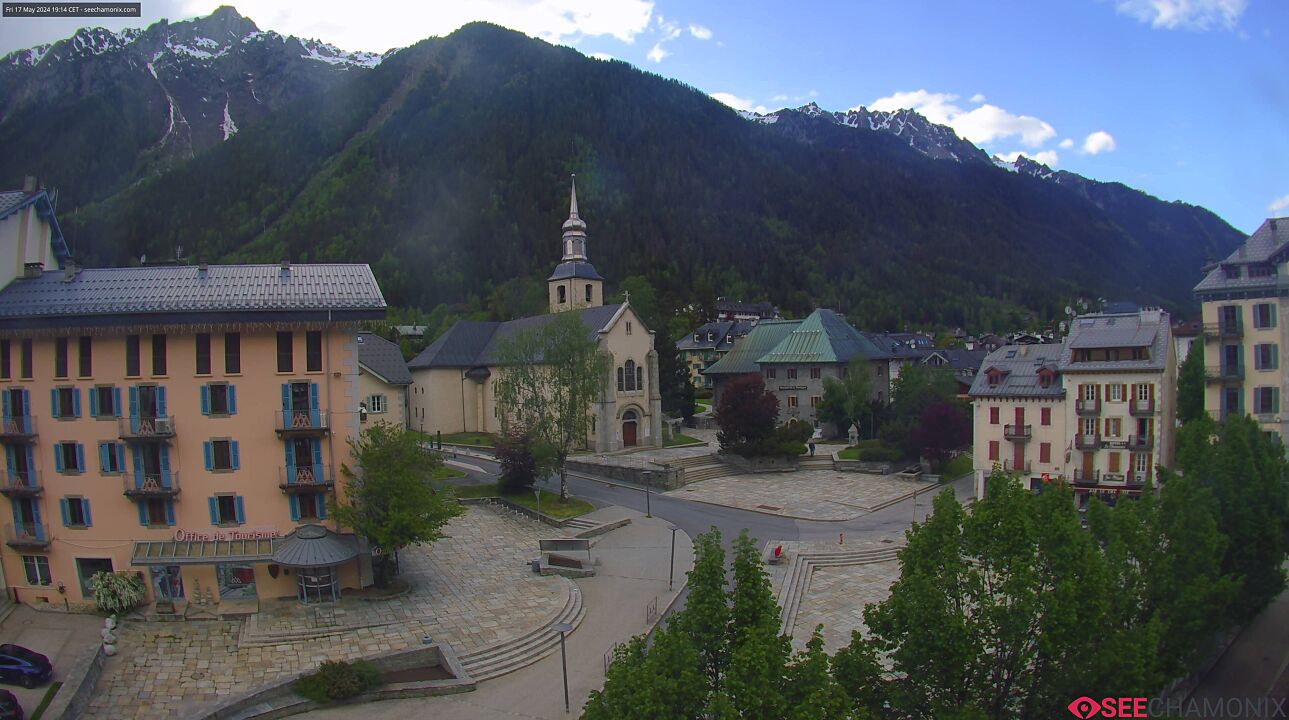
© Vigimeteo

© Snow-forecast

© Snow-forecast

© Snow-forecast
Severe Weather Warning Issued for the Haute Savoie
Heavy & sustained snow fall for 5 days puts the region on high alert
Huge snow falls have been predicted to fall this week, looking likely to start tomorrow night and to continue until Sunday 1st February.
Since 'black Saturday' a few weeks ago, that saw 1000's of passengers stranded in airports and on their way to various ski resorts due to bad weather, it's no wonder that the powers that be are on high alert.
Not only is around 1.5 to 2m of snow expected in a number of resorts, but temperatures will dip significantly too, and with wind chill we could see as low as -20 °C during the day in some places on the mountain.
The Office de Haute Montagne have today released a warning to all skiers, snowboarders or anyone expecting to spend time on the mountain, to warn of the high risks that all this additional snow (on an already unstable base layer) will bring.
Avalanche risks will be high, and the worry in Chamonix is that the conditions this week seem similar to those in 1999, when a huge avalanche destroyed chalets and killed more than 10 people in Le Tour / Montroc.
The prefecture, emergency services, police, highways agency and communications networks are all on high alert and will be watching the forecast for the next few days very closely.
More Information & advice from the Prefecture
The Haute Savoie Prefecture are today (28th Jan) are waiting on further forecasts this afternoon before they put their plans into place. This will involve extra road and motorway clearance, and may affect school buses running, which will be decided on later. Needless to say they will be ready for action.
Worries are that there will be further heavy snow fall the week after, and they are recommending that you either use public transport or keep chains and a shovel in your car boot if you do have to drive somewhere.
Keep an eye on the Vigilence Meteo updates. This map is updated twice a day at 6am and 4pm. It says if a danger is threatening one or several areas in the next 24 hour period.
There are different levels of vigilance, and we are on yellow at the moment, but that is likely to change.
- Green: No particular vigilance
- Yellow: Vigilance - Be careful ; if you practice outdoor activities or are exposed to weather risks or flooding; keep informed of developments.
- Orange: Great vigilance - Be very careful, dangerous phenomena are expected; keep yourself informed of developments and follow the safety instructions issued by the authorities.
- Possible consequences: Snow drops or black ice in important proportions are expected. Traffic conditions can quickly become very difficult on the whole road network, especially in sectors with forests where tree falls can increase difficulties. Risks of accidents are higher. Electricity and telephone lines can be damaged.
- Red: Extreme vigilance - Absolute vigilance is required ; dangerous phenomena of exceptional intensity are expected; keep regularly informed of developments and always observe the safety instructions issued by the authorities.
-
Possible consequences - Very significant snowfall or freezing rain are expected, which may seriously affect human activities and economic life. The roads can quickly become impassable throughout the network. Extensive damage can affect the networks of electricity and phone for several days. Very significant interference is expected for air and rail transport.
-
As soon as orange & red levels are reached, the prefecture implements its plan of action (alerts to the mairies, public announcements etc). Let's hope it doesn't get to either of these levels..
Also keep an eye on road traffic or road closures here.
-
And some words of caution from our snow reporter Giles who's had some first hand experience of when things go wrong.. remember it can happen to anyone - mountain professionals, locals who had lived here for years.. and maybe you!
Things I Have Learned
With a huge amount of snow on the way this weekend on top of a relatively unstable base, a lot of people are predicting a dangerous few days ahead. I wanted to share some of my experiences and the things they have taught me. Avalanche training is very important if you are venturing off piste, but even with the best knowledge and experience things can go wrong. I had neither knowledge or experience and things escalated quickly on numerous occasions.
1. Be aware of your environment
On my second season I was in Les Arcs. Myself and a friend of mine decided to hike to an off piste area near Arc 2000. We were hiking along a ridge line and it got steep. Very steep. Eventually we were digging our boards in and pulling ourselves up. I was getting tired by this point and hiking with my head down. I stopped and looked around. I had dropped below the ridge line. I dug my board in to start pulling myself up to the ridge again. Instead of pulling me up, it pulled the mountain down. A large part of the face went, with me in the middle of it. I held on to my board and started kicking to try and get some purchase in the snow. I had been told that if the worst happened and you were caught in an avalanche to try and swim, as it would help keep you on top. Without realising it this was what I was doing and it helped keep me on top of the snow as I got pulled down to the bottom of the face. Just as I was getting buried, it began to slow down. I sat at the bottom in a daze. My friend appeared at the top to see where I had gone. The slide had not made any noise and he hadn't realised what had happened. He nervously rode down the avalanched face and we went to a restaurant above Arc 1800 and bought two litres of vin chaud. We sat in near silence getting drunk trying not to think about what had happened. We then went to work in our chalets. The slide was visible from a chair lift for the rest of the season.
2. Know where you are going
A few years after that I went for a day out in Chamonix. We headed up the Grand Montets and had an excellent day. In the afternoon a friend of mine suggested we went off piste. We headed down an area that had a few tracks on it and then, when the tracks veered off to one side, my friend kept going straight. Well, I thought, he has ridden here before, I'm sure he knows what he is doing. He did not. The epic, untouched snow narrowed into a steep gulley. Then a couloir. Then it came to a fifteen metre drop. To flat. We debated trying to get down it, but the problem was that the couloir then went round a corner. What if there was a fifty metre drop round there? Or a rock wall? We began hiking out. It was impossible. At one point one of the people behind me was digging his board in for me to use as a step to get up, every single slow and agonising inch at a time. One person abandoned their board, then realised they needed it to pull themselves up, and had to climb back down for it. An hour and a half later we got bac on the piste. I gave it a hug. On the drive home I had promised I would be good company for the girl who had driven me over from La Plagne. I slept the entire way home.
3. If the worst happens, watch what happens
A few years after that and it was the very start of the season. We went to Tignes to ride the glacier. At the very top, as we were setting off we saw some people hiking up the middle of the face above us. This was not a good idea. The next time we got to the top we were setting off when people started shouting. The face had gone and one of them was getting buried. One of my friends saw where he got covered and we ran over and started digging with our hands. Someone found his feet and it turned out I was kneeling where his head was. An avalanche can carry you a huge distance when you are under, but if you go up without transceivers then looking at the spot where they got buried is the only thing you can do. If you are planning a day off piste you should have the proper equipment. Not just for yourself but for those you are with, and for anyone else you encounter off piste.
There have been a lot of warnings about the conditions coming up next week, and people need to be cautious. In the past I have not been cautious and I have been very lucky. But it is also important to go out and enjoy the incredible snow when it is here. My friend I hiked with in Les Arcs was the friend who led me off piste in Chamonix. He was also there when things went bad in Tignes. We still ride together every couple of days here in Morzine. We are older and wiser now, but we'll probably make mistakes again in the future. Remember to have the best information possible, to be as prepared as possible and to not take any stupid risks. And have fun.































